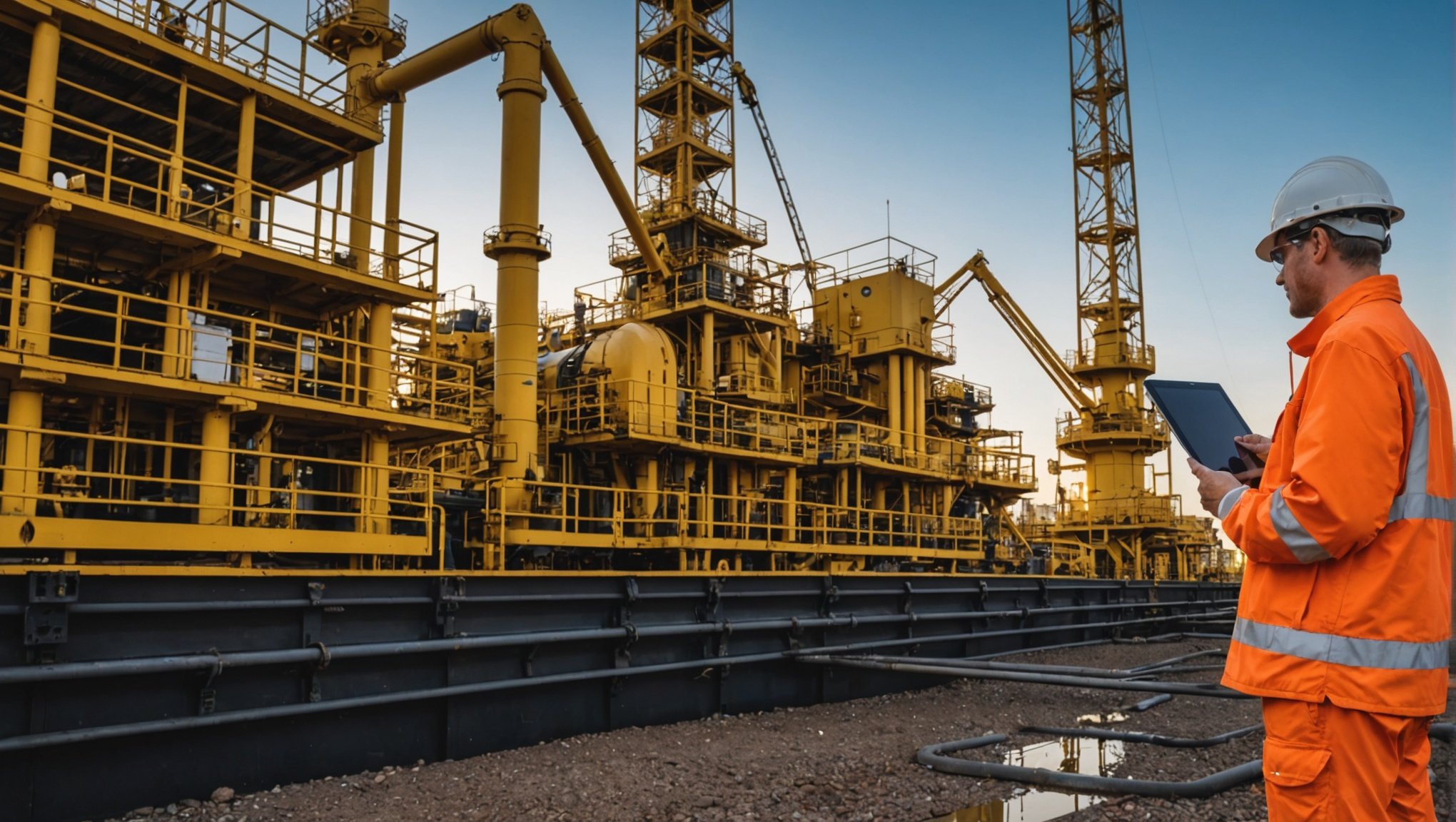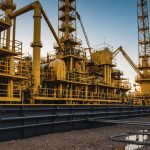Unlocking Precision: Harnessing AI for Enhanced Predictive Maintenance in the Oil and Gas Sector
The oil and gas industry, known for its complex and costly operations, is undergoing a significant transformation with the integration of artificial intelligence (AI). One of the most impactful applications of AI in this sector is predictive maintenance, which is revolutionizing how companies manage their equipment, ensure safety, and optimize operations.
The Need for Predictive Maintenance in the Oil and Gas Industry
Traditional maintenance methods in the oil and gas industry often involve scheduled or fixed intervals, which can lead to unwanted maintenance and unexpected downtimes. These downtimes are not only costly but also pose significant risks to operational efficiency and safety. Here’s why predictive maintenance is becoming a game-changer:
This might interest you : Unlocking Renewable Energy Potential: Harnessing AI for Enhanced Efficiency in Management
- Cost Savings: Unplanned downtimes can result in substantial financial losses. Predictive maintenance helps in anticipating equipment failures, thereby minimizing downtime and preventing costly disruptions.
- Enhanced Safety: By identifying potential equipment failures before they occur, predictive maintenance significantly improves safety. This proactive approach prevents catastrophic equipment failures that could lead to accidents and environmental damage.
- Operational Efficiency: Predictive maintenance optimizes resource allocation, reduces energy consumption, and enhances logistics, contributing to more cost-efficient operations. It also extends the lifespan of critical infrastructure, ensuring smoother operations.
How AI Powers Predictive Maintenance
AI-driven predictive maintenance leverages advanced technologies such as machine learning, IoT, and big data analytics to monitor equipment health in real time.
Real-Time Data Analysis
AI algorithms analyze vast amounts of data from sensors installed on equipment such as pumps, turbines, and pipelines. This real-time data analysis helps in detecting anomalies and predicting potential failures before they occur.
Also to read : Unlocking DAO Security: The Role of Blockchain in Protecting Decentralized Autonomous Organizations
- Example: ExxonMobil uses AI models to analyze real-time seismic data and historical drilling data to detect natural oil seeps in the ocean accurately. Similarly, AI-powered drilling machines analyze real-time data from sensors on the drill head, adjusting drilling trajectories and optimizing drilling operations.
Machine Learning and Analytics
Machine learning algorithms play a crucial role in predictive maintenance by modeling complex patterns and correlations within the data.
- Condition Monitoring: Advanced sensing, edge computing, and machine learning are used to schedule maintenance, visualize results, and take timely action to prevent failures. This approach ensures that maintenance tasks are planned and executed efficiently.
- Process Analytics: AI optimizes production stages by analyzing data from various sources. This includes optimizing fluid flow, enhancing recovery rates, and extending the life of reservoirs.
Use Cases and Real-World Examples
Several oil and gas companies are already leveraging AI for predictive maintenance with remarkable results.
ExxonMobil
ExxonMobil employs AI to revolutionize reservoir management, predictive maintenance, and safety monitoring. By simulating reservoir behavior, they maximize extraction efficiency and recovery rates. Real-time AI analytics enhance safety measures by identifying and mitigating potential hazards.
Royal Dutch Shell
Shell is at the forefront of integrating AI into its operations. AI-powered predictive maintenance significantly reduces downtime and maintenance expenses. Additionally, AI-powered seismic data analysis enables more precise and efficient exploration, driving innovation in drilling operations and supply chain logistics.
British Petroleum
BP leverages AI to transform its operational efficiency and cost-effectiveness. AI solutions in geological data analysis streamline the identification of potential drilling sites, ensuring higher accuracy and better resource allocation. AI also optimizes production processes and energy management.
Benefits of AI-Driven Predictive Maintenance
The integration of AI in predictive maintenance offers numerous benefits that are transforming the oil and gas sector.
Enhanced Asset Availability
Predictive maintenance enhances asset availability by 10-30%, improving worker productivity by 10-15%, and lowering the total cost of ownership by 8-40%. This proactive approach prevents catastrophic failures and improves worker safety.
Improved Operational Efficiency
AI-driven predictive maintenance optimizes resource allocation, reduces energy consumption, and enhances logistics. Here are some key benefits:
- Reduced Downtime: Predictive maintenance reduces unplanned downtime, ensuring uninterrupted operations and maximizing the outputs for each well.
- Extended Equipment Life: By identifying potential failures before they occur, AI extends the lifespan of critical infrastructure, ensuring smoother operations.
- Enhanced Safety: AI systems detect potential hazards such as gas leaks, equipment malfunctions, or unsafe working conditions, allowing companies to take proactive safety measures.
Practical Insights and Actionable Advice
Implementing AI-driven predictive maintenance requires a strategic approach. Here are some practical insights and actionable advice:
Data-Driven Decision Making
- Collect and Analyze Data: Collect vast amounts of data from multiple sources and extract actionable insights. Use AI to identify unprecedented trends, patterns, and anomalies that would be difficult to track with traditional methods.
- Real-Time Monitoring: Implement real-time monitoring systems to continuously track equipment health and performance. This helps in anticipating potential equipment failures before they occur.
Integration with Existing Systems
- Condition Monitoring: Integrate AI with condition monitoring systems to schedule maintenance, visualize results, and take timely action to prevent failures.
- Operations Management: Use AI to monitor asset performance, plan maintenance tasks, and visualize results. This enables timely action to preempt failures and optimize field service routes.
Training and Skill Development
- Comprehensive Training: Provide comprehensive training to employees on AI and predictive maintenance. This includes metrics, level setting, and skill tracking to measure, manage, and standardize work.
- Digital Work Management: Progressively evolve preventative maintenance through digital work management and analytics. Automate root cause analysis and prescriptive corrective actions to reduce reactive maintenance and drive continuous learning.
Table: Comparative Benefits of Predictive Maintenance
| Benefit | Traditional Maintenance | Predictive Maintenance |
|---|---|---|
| Downtime | High risk of unplanned downtime | Reduced unplanned downtime by 10-30% |
| Productivity | Lower worker productivity | Improved worker productivity by 10-15% |
| Cost | Higher total cost of ownership | Lower total cost of ownership by 8-40% |
| Safety | Higher risk of catastrophic failures | Prevented catastrophic failures and improved worker safety |
| Equipment Life | Shorter equipment lifespan | Extended equipment lifespan |
| Resource Allocation | Inefficient resource allocation | Optimized resource allocation |
| Energy Consumption | Higher energy consumption | Reduced energy consumption |
The integration of AI in predictive maintenance is a transformative step for the oil and gas industry. By leveraging AI, companies can achieve faster drilling speeds, reduce downtime, minimize drilling risks, and maximize the outputs for each well. Here’s a final thought from Matt Kirchner, Chief Product Officer of Prometheus Group:
“Predictive maintenance often feels like an overwhelming task, but we have ways of making that much easier and actionable. It’s not a big organisational change. We have ways to templatise and automate the creation of machine learning models… The data doesn’t just inform, it drives action.”
As the oil and gas sector continues to evolve, embracing AI-driven predictive maintenance is not just a strategic move but a necessity for maintaining operational efficiency, ensuring safety, and reducing environmental impact. By unlocking the true potential of predictive maintenance, companies can drive innovation, reduce costs, and set new industry standards.











